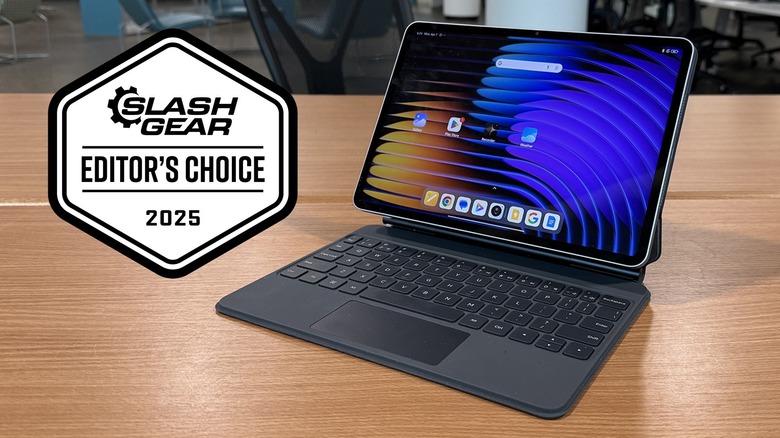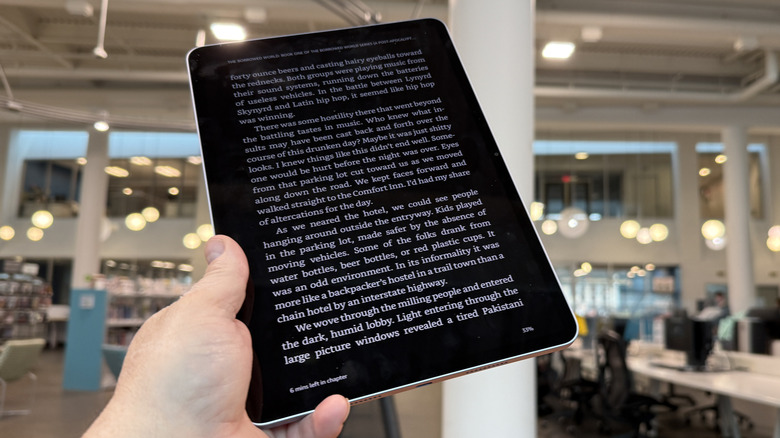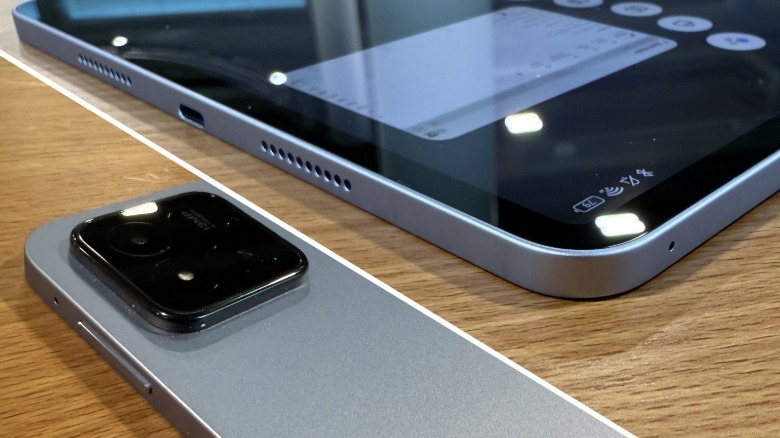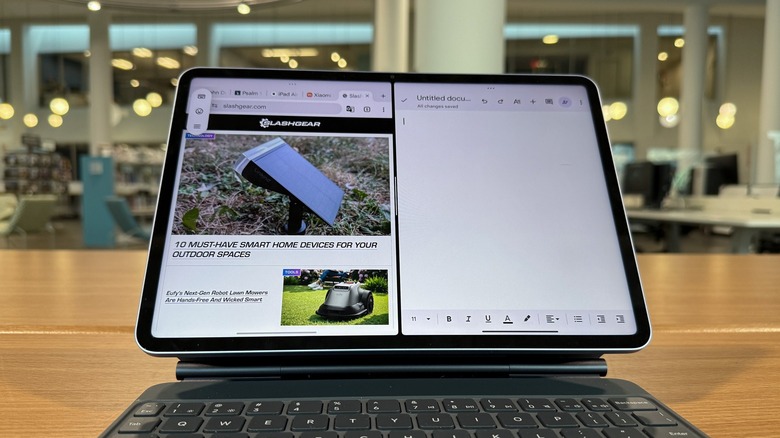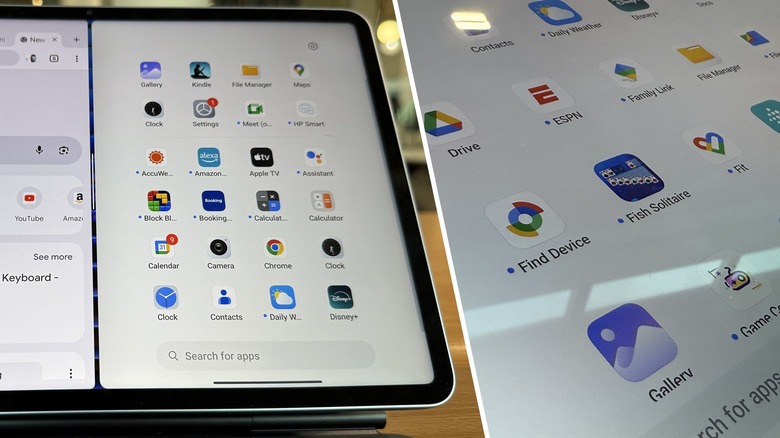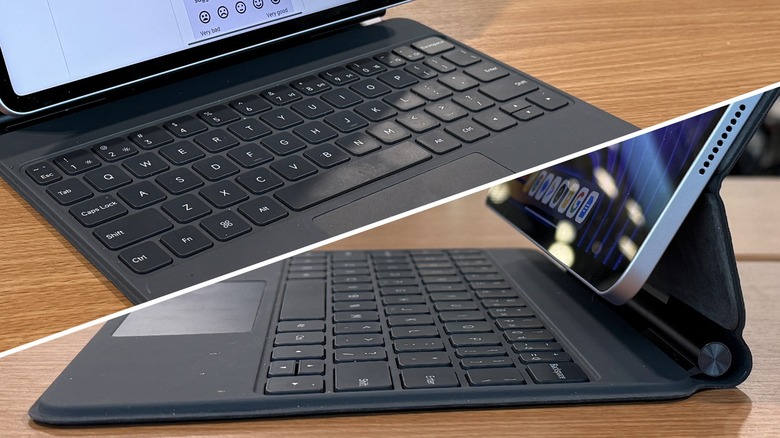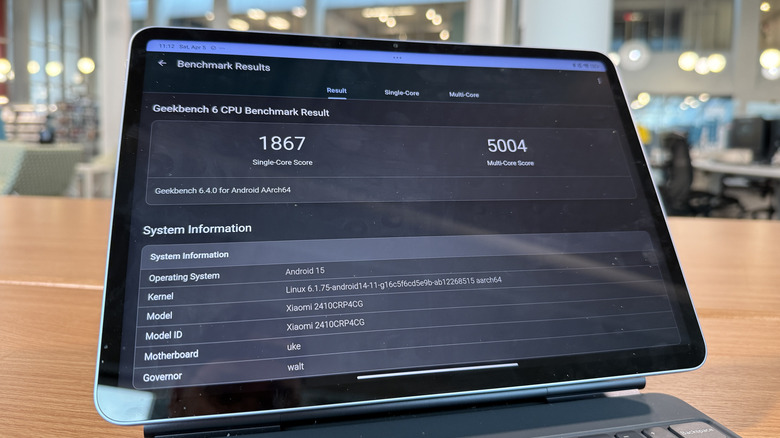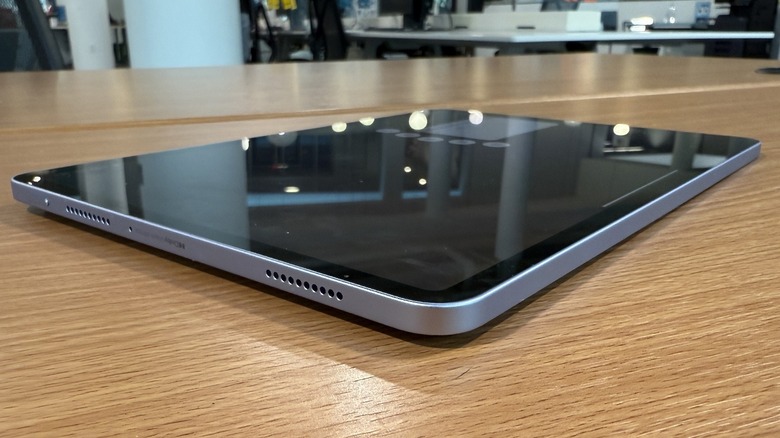Xiaomi Pad 7 Review: One Of The Best iPad Alternatives With One Annoying Issue
- Beautiful design
- Face unlock works without fail
- Focus Keyboard works great
- Great price
- A little heavy for some tasks
- Midrange processor
- Limited availability
We may receive a commission on purchases made from links.
Finding a good productivity tablet can be a challenge. There are some obvious contenders from the likes of Samsung and Lenovo here in the States, but overseas, things can get more complicated — in a good way. There are simply just a lot more options, including the Honor Pad V9 that I reviewed in March 2025. Nestled among them is a tablet from Xiaomi that is not only a strong contender as a productivity-centric tablet but also has a decent price point to match.
Given how excited I was to test the Xiaomi 15 Ultra, I wanted to spend some time with that phone's larger sibling, the Xiaomi Pad 7 to see if it kept up with the reputation. What I found was a delightful little tablet with few frills, that also does a respectable job in the productivity department which is important for me and my job.
This is a tablet that could go along with me as a writing device without having to grab a full-fledged laptop — with some caveats, of course. I've been using the Xiaomi Pad 7, mostly when I've been on the road, for about three weeks, and this is my full review.
Standard Hardware
When I'm looking at this tablet, I think the comparison that most readily jumps to mind is with Apple's iPad (2025). If you set this tablet down on a table next to an iPad Air, you might need a minute to determine which is which at a glance. That's not necessarily a good thing or a bad thing. Overall, the tablet is a little generic looking.
When we dive into the specifics, things start to diverge a bit. This tablet has an 11.2-inch display with a 3.3K resolution and a refresh rate of up to 144Hz. The screen can go up to 800 nits of peak brightness and it has support for Dolby Vision. The processor is the most notable departure; it's a Snapdragon 7+ Gen 3 which is a decidedly midrange processor — a far cry from the M3 processor in the 2025 iPad Air 11. There's also either 8 GB or 12 GB of RAM along with 128 GB or 256 GB of storage, which also fall short of the maxed-out iPad Air 11. I wish more onboard storage were possible — there's not even a microSD slot for memory expansion.
There's a 13-megapixel camera on the back of the device and an 8-megapixel camera on the front. That front facing shooter is the only biometric unlock that this tablet supports, but it is very good. There was never a time that I tried to unlock the tablet and it failed, though HyperOS 2 requires that you reenter your PIN every 72 hours.
Speaking of the software
For the most part, I enjoy HyperOS 2. It's a fairly basic build of Android. It uses the same dual row multitasking scheme as its phone build, but it's oriented horizontally instead of vertically, so it's much more standard in that way. Like the phone OS (like what was running in our Xiaomi 15 Ultra Review), you can lock apps open in the background, so the OS doesn't kill them without your knowledge. That's less useful on a tablet, but it's still there.
Split screen functionality is also here, and it works just the same as other Android tablets. You can have a 50/50 or a 75/25 view of your side-by-side apps, with a third floating window if you want, though that starts to get cluttered. You can also switch between apps in each column of the split screen view with is nice.
You can even add that split screen app view to your home screen, though doing so (or adding any other app) is a bit clunky. Instead of dragging and dropping the dual apps from the task bar onto your home page (you can do that, but the apps don't stick to the home screen) you need to long-press the icon in the task bar and tap "Add to home screen" which, fine, but why can't I just drag it? Switching the apps from one side to the other also isn't the most intuitive.
More Apps Than You'll Need
The only negative I have to say about the software in the sheer amount of bloatware that comes preinstalled on this tablet. In addition to the normal set of apps that comes along with an Android device, there is a slew of games and other apps installed. I stopped counting at around 20.
There is a gaggle of games, like "Blockblast," "Cat Tile," and "Fish Solitaire" along with a few Xiaomi apps like "Mi Browser" and the like. It's not hard to ignore bloatware apps, or even uninstall them, but they're annoying, and I wish they weren't there in the first place.
One other software irritation is the fact that the "Settings" app isn't in the notification shade by default. You can add it — and I did, but there's simply no reason to not include it by default. It's listed as a separate app in the app drawer, so fine I guess, but it's one of those quality-of-life changes that definitely does not improve the quality of life.
Xiaomi's Focus Keyboard
In addition to the tablet, Xiaomi also sent along its Focus keyboard which is basically the equivalent of Apple's Magic Keyboard for the Xiaomi Pad 7. I adore it, but it's not without its quirks. The tablet attaches magnetically to the keyboard and floats above it like Apple's Magic Keyboard. I would prefer that the tablet lean back a tad further — it's not quite angled enough for my taste.
The keyboard itself is wonderful to use. The keys are large with good pitch and travel. They also type with satisfying clicks; they're not mushy in the slightest.
The keyboard is backlit, but there is not button on the keyboard to activate or turn off the backlight. You can adjust the backlight in settings, or you can turn on automatic backlight, which seems to overestimate how much brightness you need.
The keyboard also has a small trackpad which is large enough to move the mouse all over the screen. Unfortunately, there's no way to change the direction of scrolling with the touchpad. The option is there, but it doesn't actually change the behavior which is annoying.
Xiaomi also has a Focus Pen that you can use. I didn't use it myself because a stylus isn't really part of my workflow, but for those who want one, there is one available.
Performance and Battery
On the performance side, the Snapdragon 7S+ Gen 3 is a capable midrange performer. Geekbench scores it at 1,867/5,004 single/multi-core scores respectively. Those are not mind-blowing numbers. This tablet won't run AAA titles or export 4K video with anything approaching haste. But it's certainly capable of running two apps at the same time, and it's very adequate for a writing tablet.
As for battery life, the Xiaomi Pad 7 comes with a 8,850 mAh battery. The tablet can last most of a day on a charge when being actively used. When not being actively used, it'll last for multiple days before having to be recharged. In that way as well, it works as a sort of laptop replacement. Despite the larger battery, the tablet checks in at around 500 grams, not including the keyboard case. That's not bad, but it's a little heavy for something like reading a book. Of course, if you have it attached to the keyboard and on a desk, that's a non-issue.
Xiaomi Pad 7 Price, Availability, and Verdict
Like the Xiaomi 15 Ultra, availability is limited when it comes to U.S. purchasers. You can find a 3rd-party importer selling the Xiaomi Pad 7 via Amazon, and if you go that route you'll pay $519 or more. You can find the tablet through a few other sources, 3rd-party sellers, and direct from Xiaomi online for around £369 for the base configuration — that converts to U.S. dollars right now to approximately $450. Pricing varies but seems to settle around $400 – $500 or so, which is a pretty good price for what this tablet offers.
If you're looking for something more than a Netflix box, this will do. It's very capable as a writing/surfing/content consumption tablet, but I wouldn't go so far as to call this a gaming or video editing tablet. It's just not built for that. But for $450, it doesn't have to be.
Most of the time, when you're looking for a tablet, it'll fall into the productivity category, or the consumption category. This is somewhere in between. If you pick this tablet up for movie watching, it will fulfill that purpose quite well, but maybe a Fire tablet (even an older model) could be a better budget choice. If you really want to get things done, this will do that job, but maybe the (significantly more expensive) Samsung Galaxy Tab S10+ is a better choice.
Personally, I really like this tablet, but it sits in a weird niche. It's a very nice piece of hardware, but it's not directly available inside the United States — you'll have to purchase the device through 3rd-party sources and will likely need to have it specially imported. Would that this device were available inside the states, it'd be a real contender.
